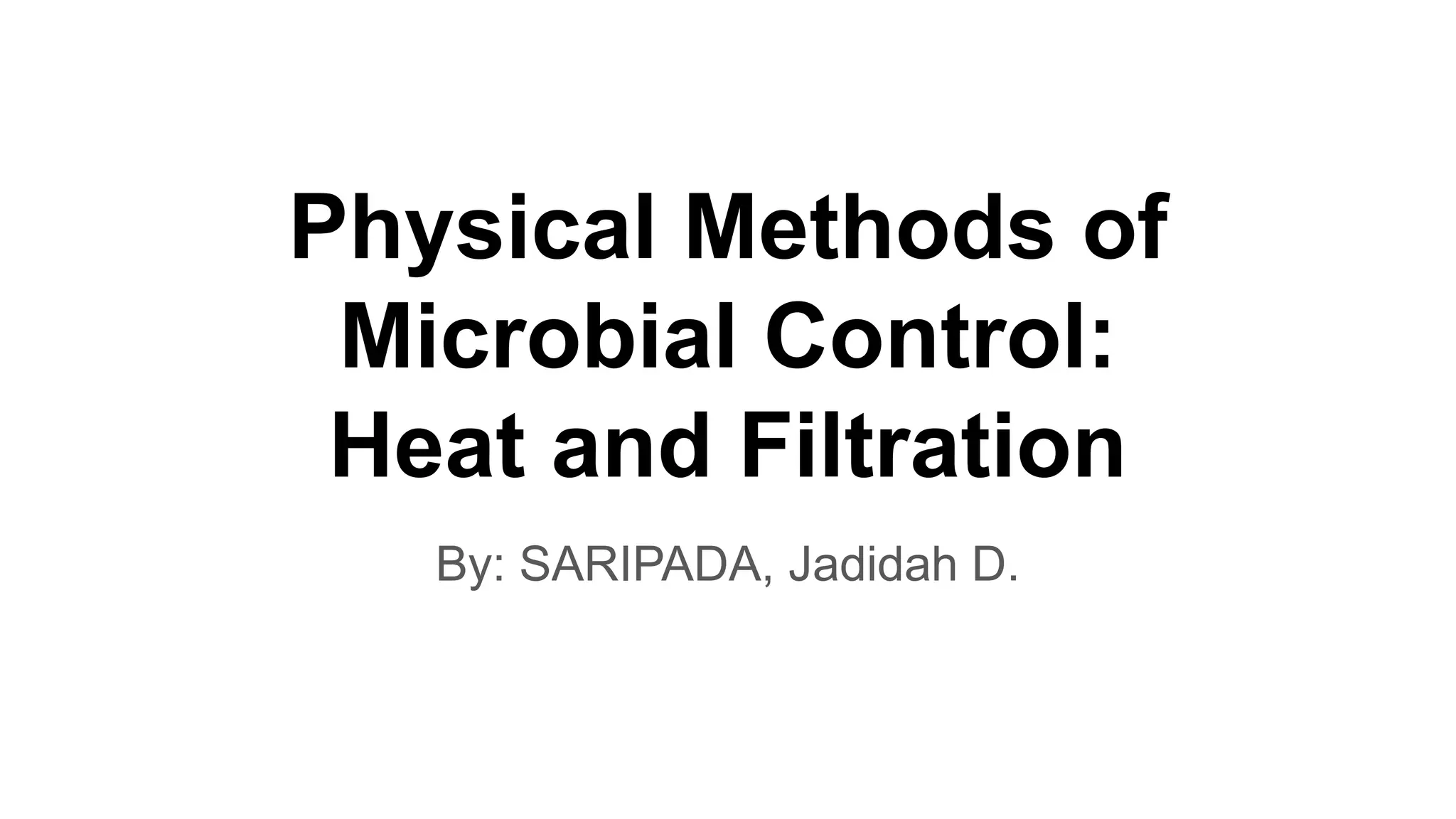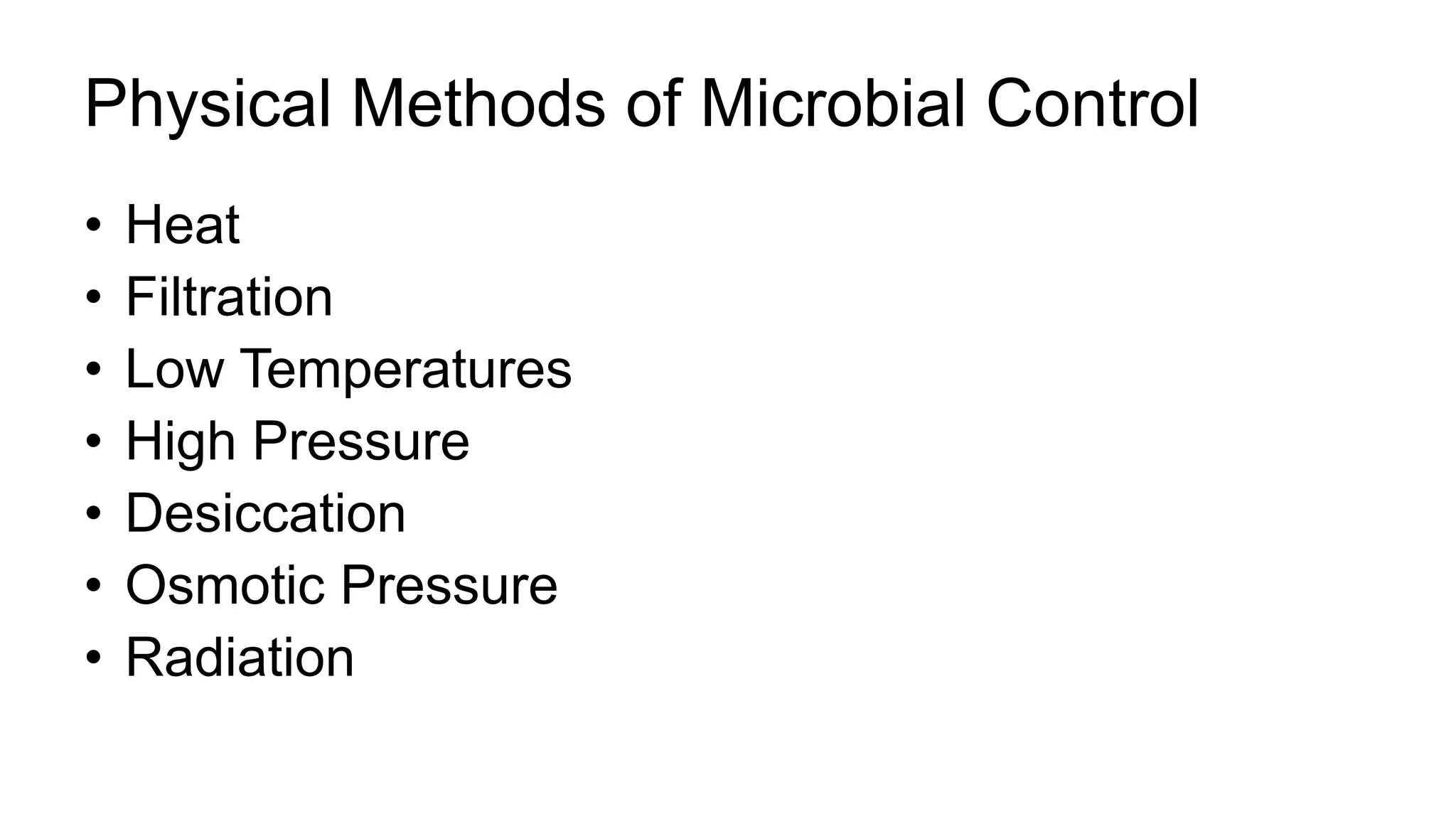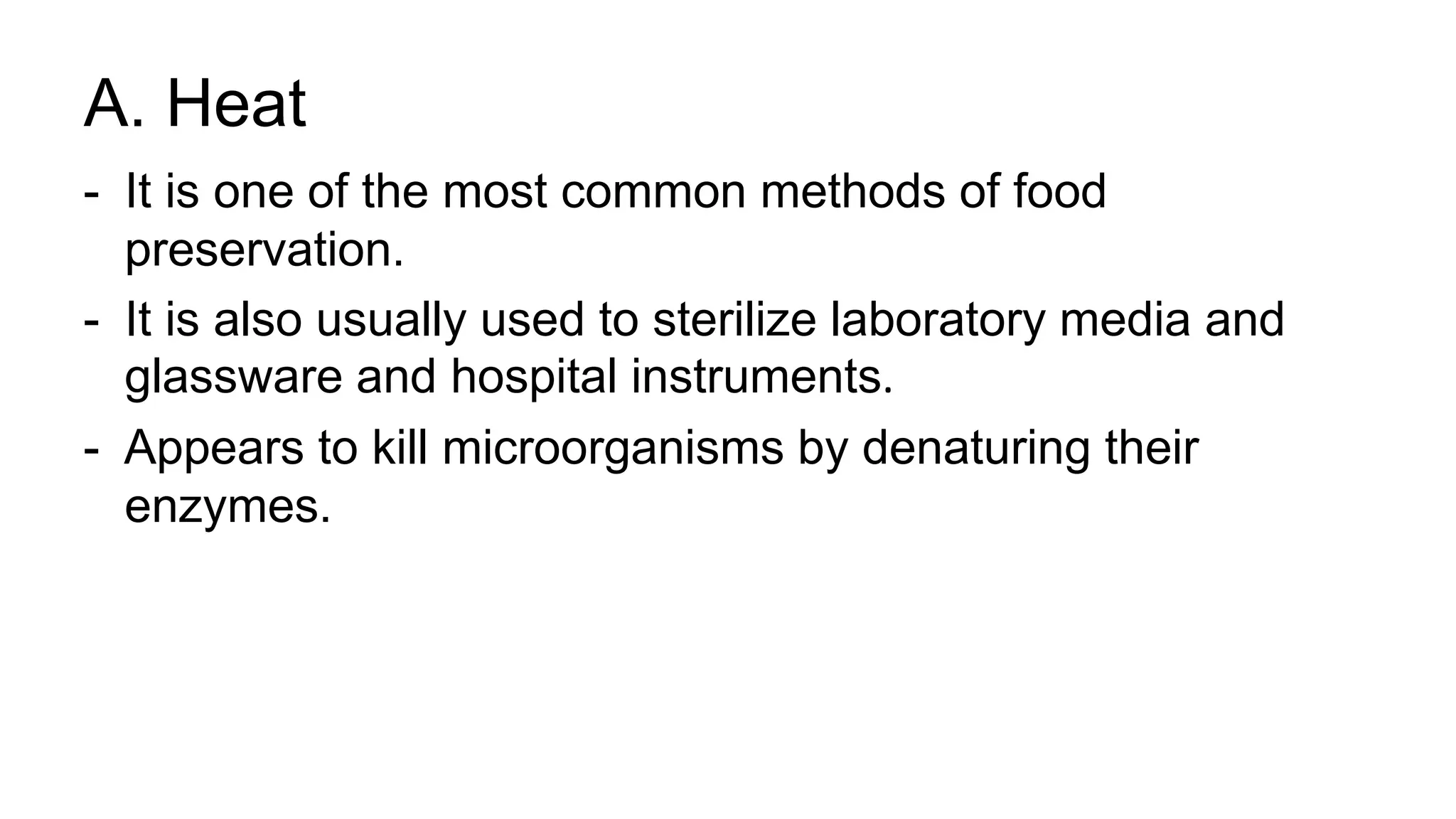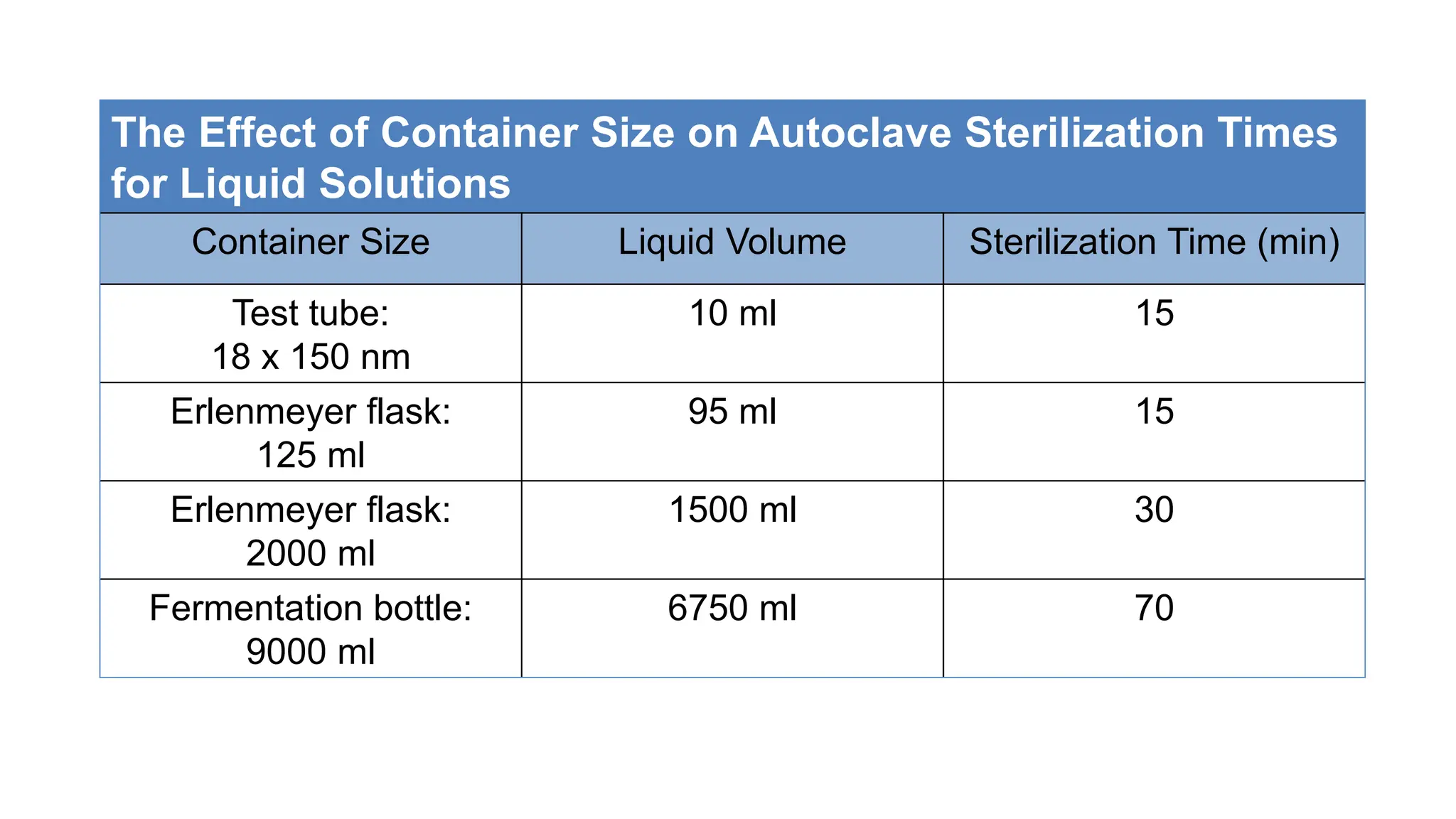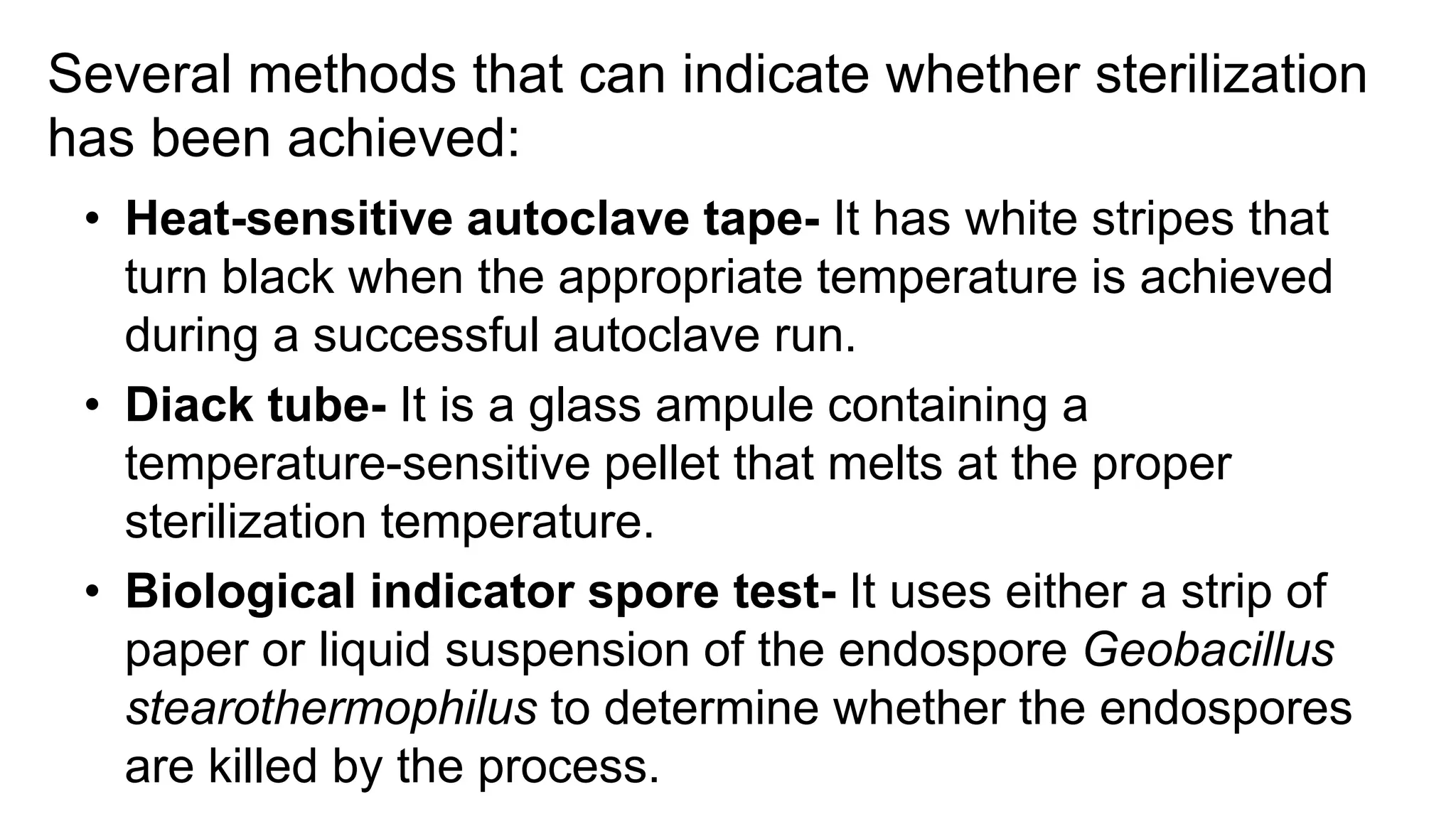The document discusses various physical methods of microbial control including heat, filtration, low temperatures, and radiation. It describes how heat can be used to kill microorganisms through processes like boiling, autoclaving, pasteurization, and dry heat sterilization. Filtration is also discussed as a way to remove microorganisms using membrane filters or HEPA filters. Specific temperatures, times, and pore sizes required to effectively kill or remove various microbes are provided.
